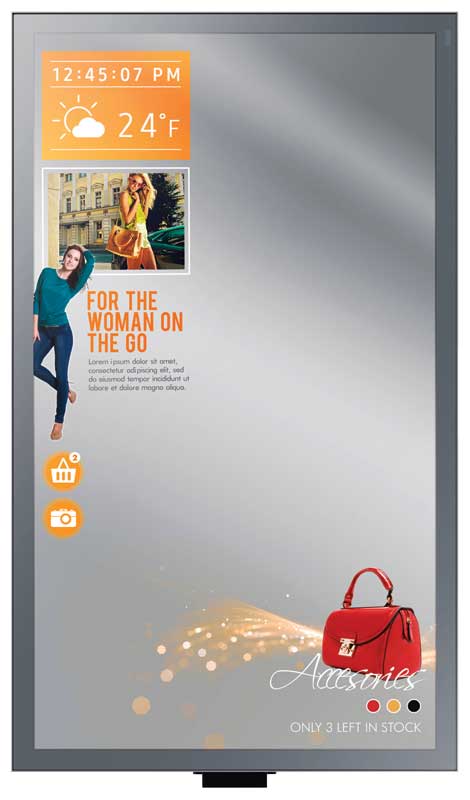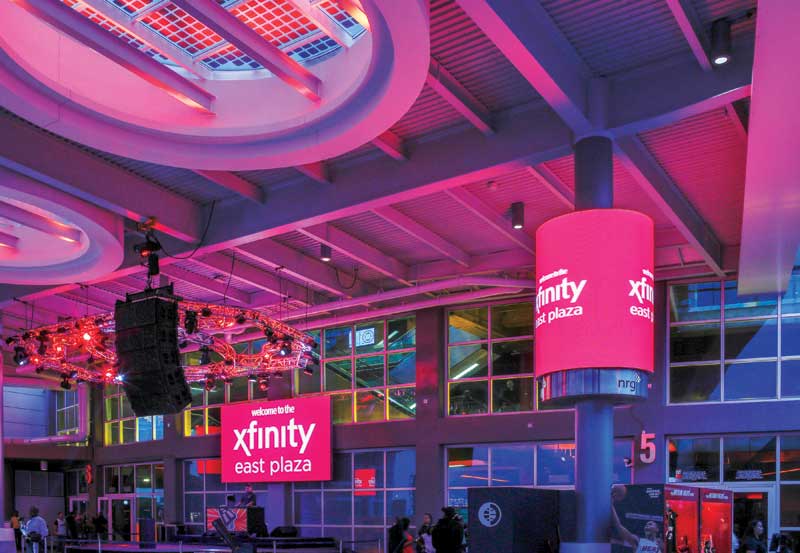Software platforms
Digital signage has become popular with not only marketers and advertisers, but also system administrators, because it allows them to source, personalize, manage and control real-time content through a variety of media applications. Centralized CMS software is key to customizing and refining messages in a unique, personalized way for a specific audience, location and time.
Further, digital signage software platforms have been expanded to incorporate ‘smarter’ capabilities like facial recognition, proximity awareness (as in the mirror screen mentioned earlier) and other monitoring features.
Indeed, today there are hundreds of digital signage software providers, with products covering a wide range of capabilities. In some cases, they provide stand-alone, application-specific software, e.g. for ad management. In others, software is made available directly from the manufacturer of the hardware. And yet another option is to offer subscriptions to cloud-
based, provider-hosted software over the Internet, i.e. through a software-as-a-service (SaaS) business model.
There is also software customized for particular types of clients. Flight information display (FID) software, for instance, is specifically designed for the central management of digital content for screens throughout an airport, usually with the capability to showcase both flight information and advertising.
In some cases, FID software is now being made smarter with features that recognize and respond to dynamic situations without requiring human monitoring, so as to better suit the needs of its audience. Screens that show directions and walking distances for flight gates, for example, can be enhanced by also incorporating waiting times at security check points, based on the number of people currently in each lineup.
This type of smart software has many other applications beyond airports. Digital signage along roadways can be updated to detect congestion levels and respond with alert messages as control measures, for instance, while networks in large office complexes, college campuses and shopping centres can be triggered to let tenants and visitors know about emergency situations, such as a fire, severe weather or hostile encounter, and offer relevant tips. Digital signage is well-positioned as a vital communications channel, as it can share breaking news and location-specific details more quickly than any other medium.
“Today’s digital signage SaaS platforms can seamlessly combine real-time diagnostics and support functions with a variety of services, content sources and apps, accessible through one portal, instantly, from anywhere in the world,” says NanoLumens’ Remmes.

Samsung’s concept for combining a mirror with a transparent OLED display, seen here in an early rendering, became a physical reality in May 2016.
Photo courtesy Samsung
Users can remotely view all of the screens in their network from a single dashboard or ‘drill down’ to a specific display and find out more information about an individual component. They can also arrange for proactive notifications.
Integration
Such examples show how the medium of digital signage relies on the integration of hardware and software to be (a) relevant to its audience and (b) ‘measurable’ by its operator. That is to say, hardware like cameras and sensors can feed data into the software both to update on-screen content dynamically and to get a clearer understanding of how many people are seeing and reacting to the content.
“In addition to environmental sensors, cameras can be added to digital displays and accessed via software platforms to support facial recognition applications,” says Remmes.
Another trend has been the strategic placement of smart ‘beacons’ alongside digital signage. These are low-powered transmitters equipped with wireless Bluetooth connectivity that can communicate with passersby via their smartphones. In a retail setting, for example, this arrangement provides an opportunity to interact with customers, based not only on their having entered the store, but also on the specific aisle or fixture they may happen to be passing at the time.
Indeed, beacons are the first proximity technology that is supported by all mobile phone platforms, allowing them to deliver context-appropriate messages to many consumers. They also have the potential to make it easier for marketers to understand their customers, including their preferences, demographics (e.g. age and gender) and recent purchase history. As they become more commonly deployed, they could revolutionize the way people interact with public spaces.
Stephen Montgomery is president of international business expansion for ElectroniCast Consultants, which forecasts market trends in network communications, integrated circuits, fibre optics, wireless communications, light-emitting diodes (LEDs) and advanced photonics. For more information, visit www.electronicast.com.






